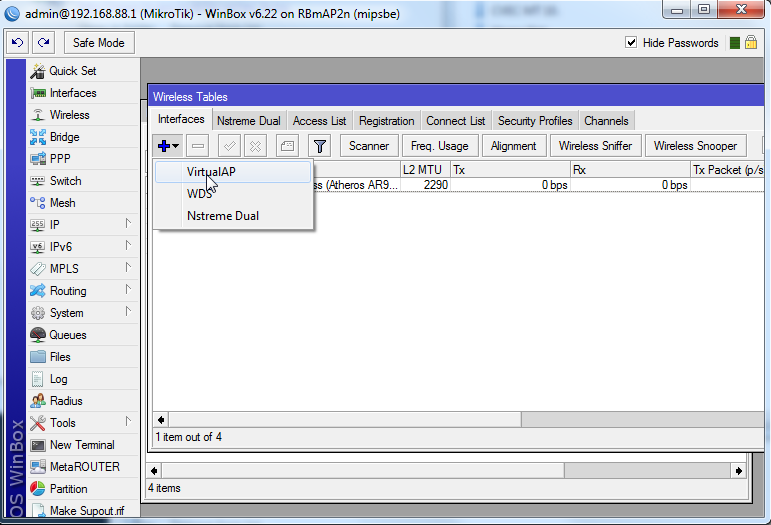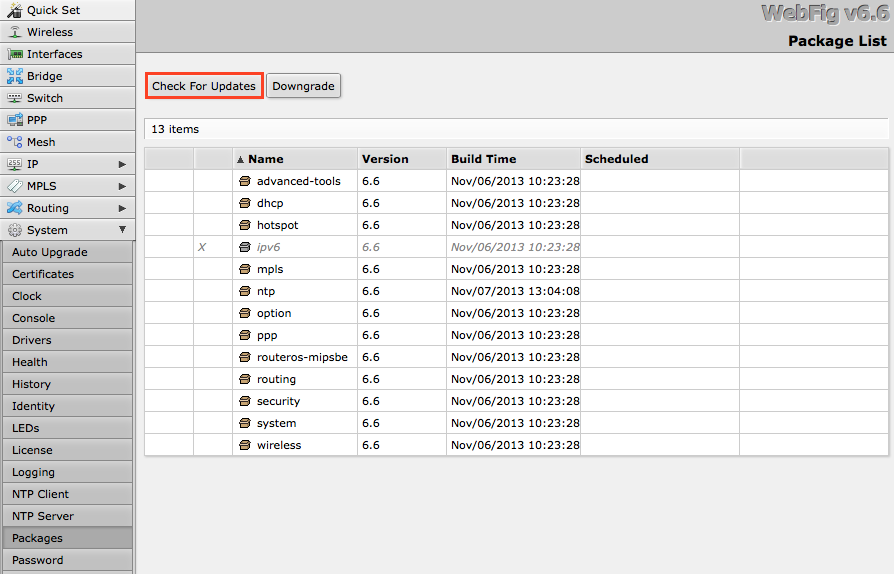

- #HOW TO CREATE OWN OS FOR MIKROTIK ROUTEROS PASSWORD#
- #HOW TO CREATE OWN OS FOR MIKROTIK ROUTEROS PC#
- #HOW TO CREATE OWN OS FOR MIKROTIK ROUTEROS WINDOWS#
#HOW TO CREATE OWN OS FOR MIKROTIK ROUTEROS PASSWORD#
In the other hand, this is a good choice when you need to use that share for any specific usage and when this username and password should be unique in your network. Of course, you can also use either a microSD card or a USB drive (if your RouterBoard supports it), but there’s no guarantee that you will be satisfied with their performances.įrom the security point, this feature is completely based on the local router’s user database.
#HOW TO CREATE OWN OS FOR MIKROTIK ROUTEROS PC#
In that case, you can run RouterOS on any PC (including the virtual machines) with a larger disk storage and faster disk access. If you have a plan to use this service for a larger number of files, you should consider to use the RouterOS x86 version. This opens a wide range of different opportunities.
#HOW TO CREATE OWN OS FOR MIKROTIK ROUTEROS WINDOWS#
Even better, it’s natively supported from any Windows 2012R2 and later server. Indeed, I was rejected to write this file.Īs you can see from this scenario, this mechanism is very easy to implement and easy to use. I tried to save this file with the account that has only the read-only access. I opened this test file and tried to write a new line at the end: Moreover, MikroTik can support both SMB 1.0 and 2.0 protocols. I got access to the share:Īs you can see from this screenshot, the server doesn’t use ye olde SMB 1.0 protocol and needs only the Client for Microsoft Networks. The server is in the domain and that’s not important. I entered the username and password for this router and clicked on. I logged in on one of my servers, opened the Windows Explorer and typed the URL \router\share1. We can now access this file using one of those user accounts that I created in the previous step (I used user2). I dragged and dropped this file in my new share /share1. Use the parameter read-only=no to assign it the read-write access privileges.įor the final test, I created a simple text file named Document.txt and paste inside 5 paragraphs of the Lorem Ipsum text. Therefore, my suggestion is to at least define the very strong password to this account (like yQokNy7/~/1JUMA ip smb users add name=user2 password=test4321Īs you can see, when you add a new user from the command line, by default it will be in the read-only state. This account can’t be disabled or deleted.

You can achieve the same result using the command line: > ip smb shares add name=share1 directory=/share1įlags: X - disabled, I - inactive, * - defaultīy default, there’s only the guest account without any password. Bear in mind that you must enter the directory name or you will share the whole disk (i.e. In this example, I made a share named share1 in the directory /share1. We will add a new share with a click on the button.

By default, every share will have up to 10 concurrent connections. Here you can add, delete, enable or disable any share. When you click on the button named you will open the new window containing a list of all existing file shares. You can check this post related to the file path naming conventions in MikroTik RouterOS. However, you can delete this folder definition and create your own. You can also use the command line: > ip smb set interfaces=ether1,ether2.īy default, you will have the pub folder in the root of router’s primary storage space and it’s intended to be used by this service. That means that you can choose multiple interfaces. As you can see, there are two arrows behind this drop down list. Therefore, choose your local interface here. You don’t want to expose this file server to the Internet. The second parameter is a very important for your security. You can enable this service from the command line with: > ip smb set enabled=yes The first option allows you to turn on or off this service. The most important are Enabled and Interfaces. You can access this service through the menu IP > SMB. This nifty feature can be used even with the Windows Server 2016/19 storage-less cluster as the network location for the Cluster Witness disk. This feature can be very handy when you need to share a few smaller files. Starting from the RouterOS version 5.12, you can enable a SMB file sharing feature. Virtually any MikroTik RouterOS device can act as a Windows file server.


 0 kommentar(er)
0 kommentar(er)
